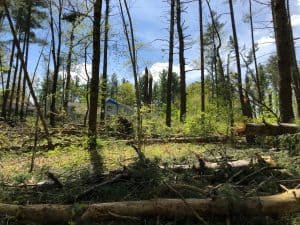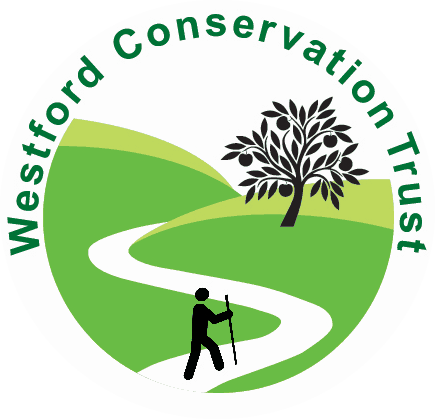
Climate change is the most important challenge the world faces. As I write this, the UN COP26 summit has just adjourned in Glasgow, Scotland. This is the 26th UN Climate Change Conference. COP stands for Conference of the Parties. The parties are the 197 countries that are members of the UN Framework Convention on Climate Change. In 2015 these countries signed the Paris Climate Accord, known as the “Paris Agreement”. The agreement vowed to allow no more than 1.5 degrees C additional warming of the atmosphere. Leaders from around the world are declaring that COP26 is the world’s last, best chance to save the world from the worst of a climate catastrophe. The COP26 website states, “The overarching goal of the summit known as COP26, is to put the world on a path to aggressively cut greenhouse gas emissions and slow Earth’s warming.”
The four main goals for COP26 are detailed below:
- Secure global net zero by mid century. All carbon emissions will be offset by carbon sequestration, thus becoming “net zero”.
To achieve this goal, countries will need to:
-Accelerate the phase-out of coal.
-Curtail deforestation.
-Speed up the switch to electric vehicles.
-Encourage investment in renewables.
- Adapt to protect communities and natural habitats
-Protect and restore ecosystems.
-Build defenses, warning systems, resilient infrastructure and agriculture to avoid loss of homes, livelihoods and even lives.
- Mobilize finance
-To deliver on the first two goals, developed countries must make good on their promise to mobilize at least $100 billion in climate finance per year by 2020.
-International financial institutions must play their part and we need to work towards unleashing the trillions in private and public sector finance per year to secure global net zero.
- Work together to deliver. At COP26, countries must:
-Finalize the Paris Rulebook (the detailed rules that make the Paris Agreement operational)
-Accelerate action to tackle the climate crisis through collaboration between governments, businesses, and civil society.
After all the meetings were wrapped up how did they do? Elders for Climate Action judges COP26 a partial success. The ECA recent newsletter states that “nations pledged to reduce but not to end subsidies for fossil fuels.” They did not commit to phase out fossil fuels entirely. But there was some progress: “For the first time the parties acknowledged that fossil fuels are the problem. Countries agreed to cut methane emissions 30 percent by 2030….Major automakers pledged to phase out sales of new gasoline and diesel-powered vehicles by 2040 worldwide. Over 100 countries pledged to stop deforestation by 2030.”
Reaching these goals is a work in progress. What are we in Massachusetts doing about it? I’m proud to say that in Massachusetts, Westford and other towns have already started on the implementation of the COP26 goals. In 2021, the State of Massachusetts officially adopted the Decarbonization Roadmap to 2050. The Mass. Executive Office of Energy and Environmental Affairs (EEA) website states, “The Roadmap identifies the strategies, policies and implementation pathways for MA to achieve at least 85% Green House Gas reductions by 2050.”
In Westford, a new grassroots group, named Westford Climate Action was formed in 2020, and immediately set to work on climate issues. WCA’s website explains that they “Sponsored a Climate Action Resolution at Special Town Meeting in October 2020 to ask the Select Board to promote clean energy, reduce fossil fuel and develop a road map to achieve net-zero greenhouse gas emissions by 2050. The Resolution passed overwhelmingly.” As a result, in February, 2021 a new, expanded energy committee for the Town, called the Westford Climate, Energy and Sustainability Committee (WCEAS) was formed and was given a new charge by the Selectmen:
“The committee’s mission is to guide the town of Westford to a future where, by 2050, net emissions of carbon dioxide and other greenhouse gases attributable to all sources in town are zero. The committee is charged with identifying short and long-term energy goals; facilitating research studies, projects and collaborations; enlisting the support of residents and businesses; recommending changes to laws and regulations; seeking state and local funding; and recommending any other actions necessary for Westford to achieve net zero carbon emissions by 2050. As part of this mission, the committee will work with other town committees that have an impact on energy use and sustainability to provide advice and expertise on increasing energy efficiency and maximizing the use of clean, renewable energy.” Both the WCA and the WCEAS are hard at work researching climate problems and solutions, and work cooperatively with all Town committees and boards. Both organizations welcome new members. The WCA website states: “Our mission is to drive climate action. We promote sustainability and advocate on the local level for actions that will reduce greenhouse gas emissions and safeguard the health of our community for future generations. We ask interested individuals to sign up for our newsletter and encourage anyone who wants to make a difference to join our organization.” See their website at: westfordclimateaction.org.
Many thanks to all flora and fauna reporters for the month of November. Please send reports by December 26 for the next column.
————————
Late October Reports:
Rosemarie Koester, Providence Rd. October Report: Black bear visited October 14 at 9:30 a.m. After our making a lot of noise and ringing loud bells, he went away. Many chipmunks, squirrels, occasional bunny. After the bear visit, we didn’t put our feeders out again. This bear doesn’t forget. Birds: Exciting to hear great horned owl one night, goldfinch changing color, house finch, chickadees, tufted titmouse, cardinals, blue jays, hawks flying overhead. Great blue heron visited us twice…walked around in the woods and went back to the marsh. October 31, saw my first junco this morning.
November Reports:
Marian/Bill Harman, Old Colony Drive. November 1, first junco came to our feeder today. Juvenile deer grazing near our bird feeder, had lovely gray winter coat. Nov. 4, four turkeys visited in two groups; two males and two females. Nov. 9, great horned owl calling at 10 p.m. November 11, first day this season to record birds for Project Feeder Watch. November 14, two tom turkeys eating under feeder, with a chipmunk running around right under and around their heads. Cormorant resting on a rock in Keyes Pond. November 15, a lovely little warbler in our rhododendron–yellowish belly, grey-green back, eye stripe. November 18, temp. up to 70 degrees today! Belted kingfisher perched on a small tree at edge of Keyes Pond, occasionally calling its rattle call. November 26, much cooler weather. Started out at 40 degrees, and by evening it was snowing our first snow. Four house sparrows, one white-throated sparrow, two mourning doves, two juncos, male cardinal, one blue jay, four chickadees, three titmice, female downy woodpecker, male red-bellied woodpecker, one white-breasted nuthatch.
Esther Donlon, Providence Rd. November 19, two white-tailed bucks locking horns in her yard [Esther sent good photos from her trail cam-MH]
Rosemarie Koester, Providence Rd. November Report: juncos in the yard daily now–“always happy to see them back.” Usual bird count: chickadees, tufted titmouse, nuthatch, finches, several pairs of cardinals, goldfinch, purple finch and house finch, blue jays, doves, grackles. One day, a group of red-winged blackbirds came in a group with the grackles. Heard a pack of coyotes out back once, wild turkeys a few times, one a leucistic turkey. Numerous gray squirrels, occasional chipmunk (think they are starting to hibernate). Canada geese flying overhead, hawks frequently flying overhead. “It has been a bizarre autumn. I was doing yard clean up and there are buds on some bushes. I even have a blue periwinkle blooming and two more pink million bells blooming like a small petunia. My chives are in the window box and still alive. Have never seen anything like this.”
Verbal report from Rich & Karen Strazdas on Nov 22 -Karen just called to report that traffic was stopped in front of Roudenbush as ten wild turkeys crossed Main St in the crosswalk. Maybe not so wild after all. No pictures though.
Marian Harman is a member of the Westford Conservation Trust, a non-profit conservation organization whose mission is the preservation of Westford’s open spaces and trails. The Trust welcomes new members and volunteers. Visit us at westfordconservationtrust.org or on Facebook.
